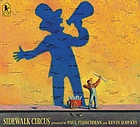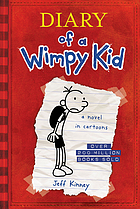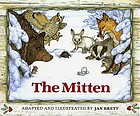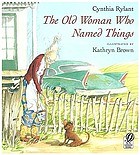 | |
| Author: John Green Published: 2011 |
I found the reader's voice annoying, but that is not the only reason I wish I had read the book. I love going back into the book and rereading sections and trying to find how different parts are related. I can't do that with the CDs and I know that I've forgotten so much already because I cannot quickly go back to refer to the book.
So, I will read the book. I've been listening to it in the car. I have to keep replaying it because my children have been listening to it with me. Of course, now we are all on different parts so I've reheard certain parts a few times. My middle schooler, Mikey, and my high schooler, Will, both have enjoyed listening to it and are disappointed that I have finished it before them.
This book is about Hazel, a girl with cancer, and the relationship she forms with other cancer patients, survivors, and non-cancer characters. The focus is primarily on her relationship with Augustus Waters, a hot guy, who attends the support group session one day. Augustus had a type of cancer where 80% of the people survive. Augustus had lost his leg to the cancer, but we think he is going to survive as well. He falls in love with Hazel because she is funny, sweet, and reminds him of Natalie Portman in V is for Vendetta.
It could be because I listened to the book, but I didn't find Hazel to be very nice. She does not want to be judged by others because of her illness, but she is very judgmental herself. There is a girl in support group with appendix cancer and I feel Hazel judges her because it's cancer in the appendix. I suppose that isn't such a big deal? Hazel also is tough on people who respond differently than she wants them to respond. For example, Augustus's sisters are annoying when they speak to Augustus while on his deathbed, but that is what they know. Everyone has a right to respond to things as they know. Hazel seems to stop being friends with her healthy friend from high school. This girl has a British accent, even though she isn't British. So, that is a bit annoying, but her friend is trying to be a friend and Hazel does not seem to make an effort with that friendship. I may have heard this wrong, but it was my interpretation based on the reader of the book.
I remember best when Augustus and Hazel are heading to Amsterdam and they are waiting in the airport. Augustus leaves to get a hamburger and leaves Hazel and her mom sitting alone at the terminal. Augustus finally returns right before they are to board the airplane. We find out that he didn't leave just because he was hungry, but because it was obvious that the three of them together were suffering. He didn't want people looking at him with pity. I think this story sticks with me because I'm reminded of my mom going through cancer. She bought a wig, always wore hats, fought to walk like she wasn't in pain even though she was. I just wonder why we always tend to act like everything is okay. Isn't it okay to not be okay? Maybe the people aren't feeling sorry for you, but maybe they are compassionate because they too have experienced something like this. I think that we need to realize that people are basically good. Looks might not be anger or pity, they could be understanding.
The ending was great. Hazel finally talks with her parents and they talk with her. They have an understanding and no matter when Hazel dies, Hazel can feel good because her parents will live on. Hazel can accept that she will die and that her parents will continue living; they will miss her, but they are going to make a difference in the lives of others. (Mom is taking classes to become a counselor for cancer patients.)
This book is too intense for 3rd grade. The CD case says 14+. So, I won't share it with my own class, but I will share it with my own children and make sure they hear the entire thing. I will read it on my own and probably modify my views on the book. This story would be good for the family and friends of cancer patients to have a better idea of what the cancer patient is going through.
Check this book out from the library!












 Back to Front and Upside Down! was awarded the Schneider Family Book Award. This award " honors an author or illustrator for a book that embodies an artistic expression of the disability experience for child and adolescent audiences. "
Back to Front and Upside Down! was awarded the Schneider Family Book Award. This award " honors an author or illustrator for a book that embodies an artistic expression of the disability experience for child and adolescent audiences. "











